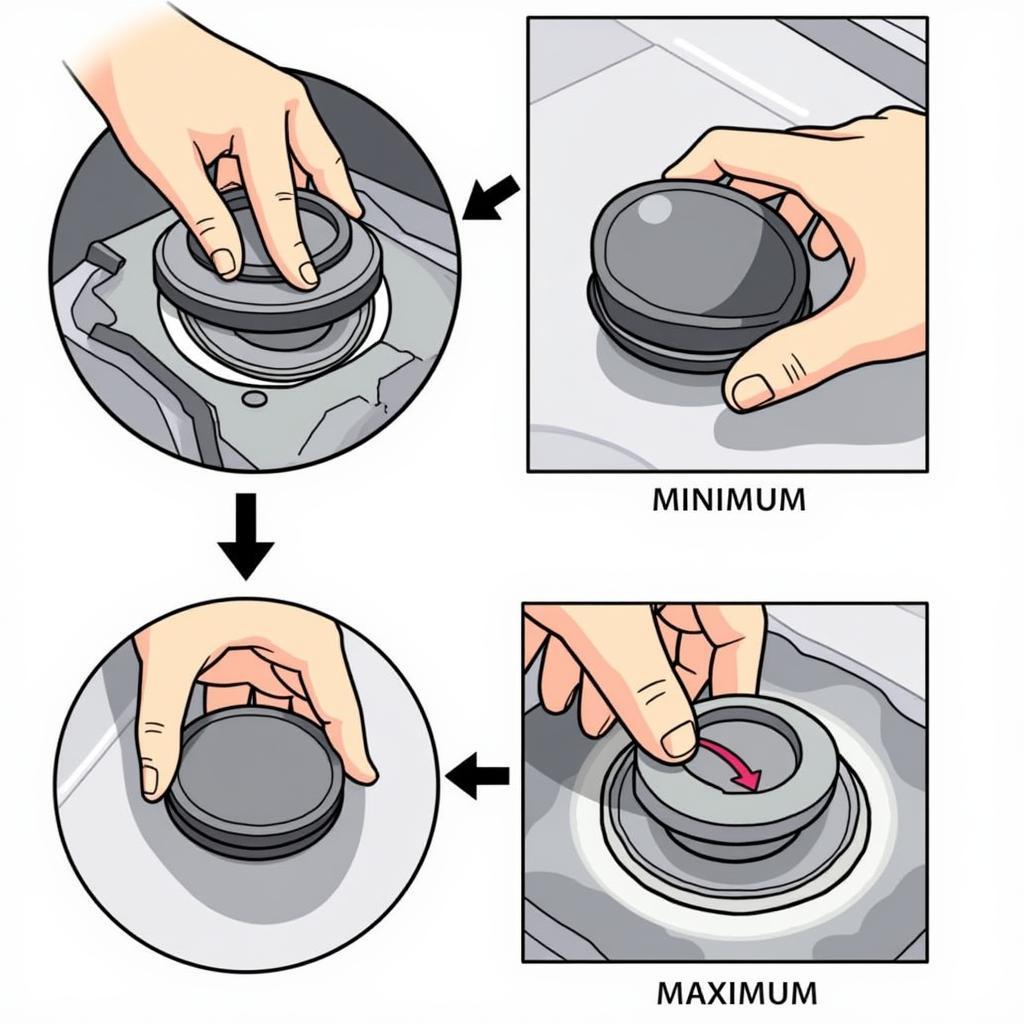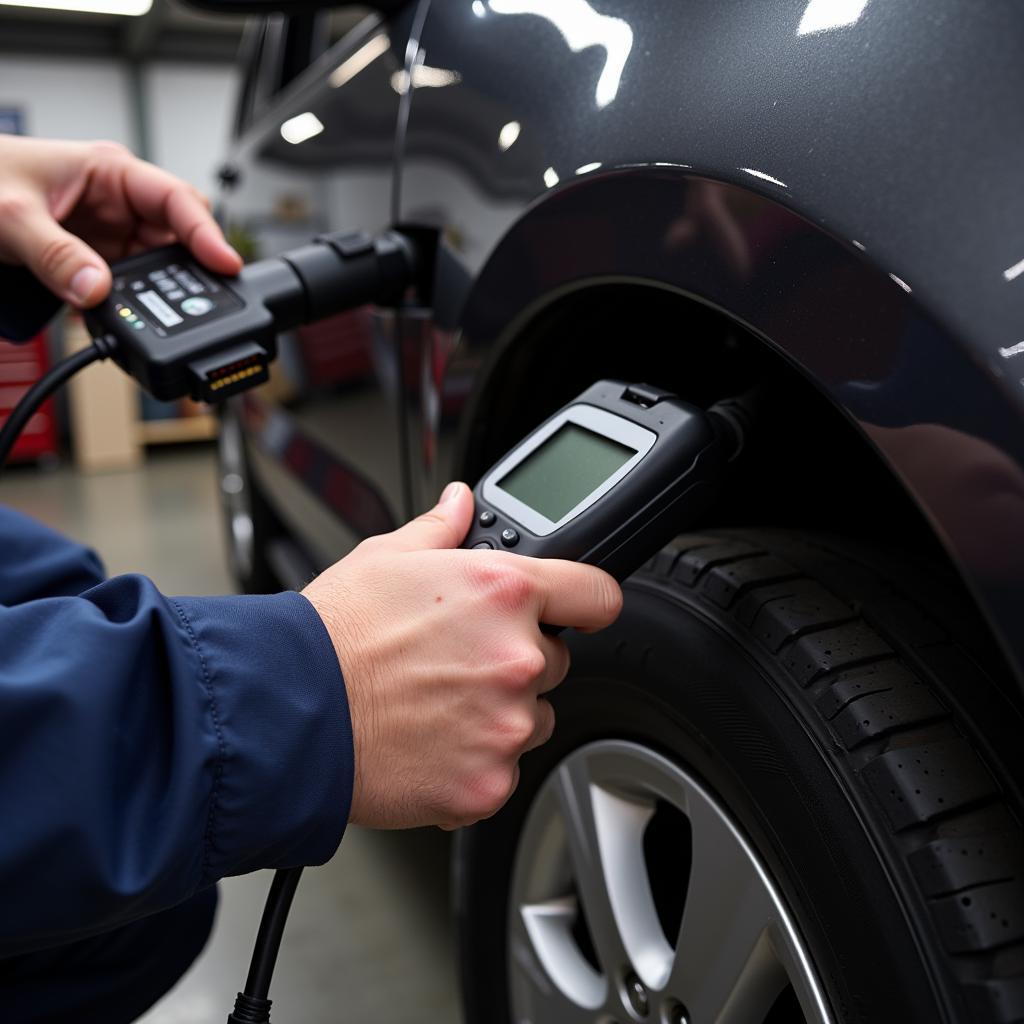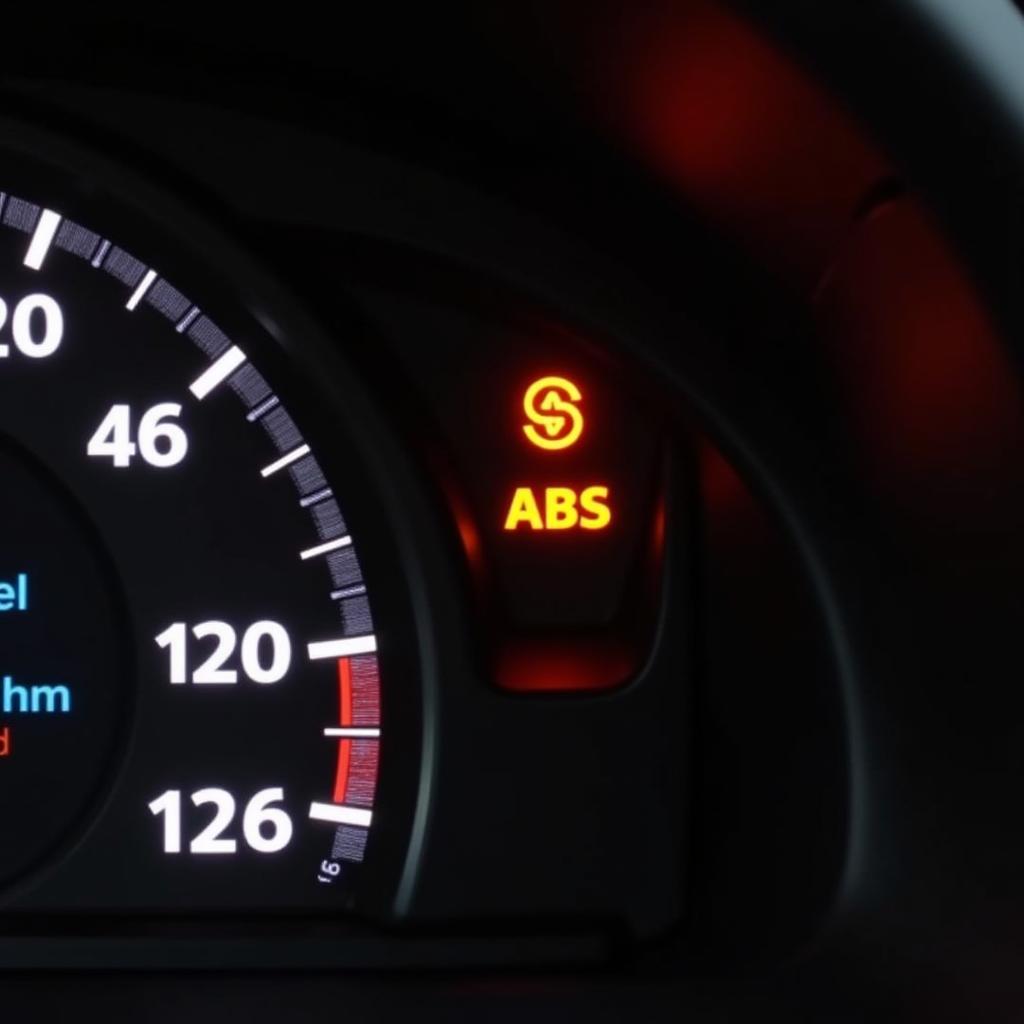When your brake system warning light and ABS light illuminate simultaneously, it can be a nerve-wracking experience. This dual warning signals a potential issue within your vehicle’s braking system, demanding immediate attention. Understanding the causes, diagnosis, and solutions can help you address this problem effectively and safely. what is a brake system warning light
Understanding the Warning Lights
The brake system warning light, often a red exclamation mark within a circle, indicates a general problem with the braking system. This could range from low brake fluid to a more serious issue like a malfunctioning master cylinder. The ABS light, typically amber or yellow, signifies a problem with the Anti-lock Braking System (ABS). While your brakes may still function, the ABS, crucial for preventing wheel lockup during hard braking, is deactivated.
Having both lights on suggests a potential link between the two systems, which could stem from issues like low brake fluid affecting ABS function. Accurate diagnosis is key to pinpoint the exact cause and implement the correct fix.
Diagnosing the Problem: A Step-by-Step Approach
- Check Brake Fluid Level: The most common cause is low brake fluid. Open the hood and locate the brake fluid reservoir. If the fluid is below the “MIN” line, top it off with the correct brake fluid type specified in your owner’s manual.
- Inspect for Leaks: Low brake fluid often indicates a leak. Carefully examine the brake lines, hoses, calipers, and wheel cylinders for any signs of fluid leakage.
- Check Brake Pads: Worn brake pads can trigger the brake system warning light. Inspect the brake pads for wear and tear. If they are thin, replace them immediately.
- Scan for Diagnostic Trouble Codes (DTCs): A diagnostic scan tool can pinpoint the specific fault codes related to the brake system and ABS. This will provide more insight into the problem’s origin.
- ABS Sensors: Malfunctioning ABS sensors can cause both lights to illuminate. A diagnostic scan tool can identify faulty sensors. These sensors can sometimes be cleaned or adjusted, but often require replacement.
- ABS Module: In some cases, a faulty ABS module might be the culprit. This requires professional diagnosis and potentially replacement.
 Checking the Brake Fluid Level in a Car
Checking the Brake Fluid Level in a Car
Remote Diagnostics and Programming: The Modern Solution
Modern vehicles often require specialized diagnostic software and programming tools to address complex issues like ABS and braking system malfunctions. Remote diagnostics and programming offer a convenient and efficient solution. Qualified technicians can access your vehicle’s systems remotely, diagnose the problem, and even reprogram certain modules without physical access to the car. This can save you time and money, particularly in situations where specialized expertise is required. 2002 ranger brake warning light on
“Remote diagnostics have revolutionized the way we approach car repairs, especially for intricate systems like ABS. It allows for quicker diagnosis and often avoids the need for a tow truck, saving the customer valuable time and expense.” – John Miller, Automotive Diagnostics Specialist.
Why Immediate Action is Crucial
Ignoring the brake system warning light and ABS light can lead to dangerous situations. Reduced braking performance, increased stopping distance, and loss of ABS functionality can significantly compromise your safety and the safety of other road users. 2003 mini brake warning light reset
 Scanning a Car for Diagnostic Trouble Codes (DTCs)
Scanning a Car for Diagnostic Trouble Codes (DTCs)
What If the Lights Remain On After Troubleshooting?
If you’ve attempted basic troubleshooting steps and the lights persist, seek professional help immediately. A qualified mechanic with access to advanced diagnostic equipment can accurately diagnose the problem and perform the necessary repairs. 2015 audi brake warning
Conclusion
Experiencing both the brake system warning light and ABS light on requires prompt attention. While simple checks like brake fluid level and brake pad wear can sometimes resolve the issue, more complex problems may necessitate professional diagnosis and repair. Don’t compromise your safety. Address these warning lights promptly to ensure your vehicle’s braking system functions optimally. brake system warning cx5 car won’t start
FAQ
- Can I drive with the brake system warning light on? It’s strongly advised against driving with this warning light illuminated. Reduced braking performance can create hazardous situations.
- What does it mean when both the brake and ABS lights are on? It suggests a potential problem affecting both systems, often related to low brake fluid or a malfunctioning ABS component.
- How much does it cost to fix a brake system warning light issue? The cost varies depending on the underlying cause. A simple brake fluid top-up is inexpensive, while more complex repairs can be significantly more costly.
- Can I reset the brake system warning light myself? While you can attempt to address simple issues like low brake fluid, resetting the light usually requires addressing the root cause and potentially using a diagnostic scan tool.
- Is it safe to drive with the ABS light on? You can still drive, but your ABS functionality is disabled. Maintain extra caution, especially in slippery conditions.
- What could cause the ABS light to come on? Several factors can trigger the ABS light, including faulty ABS sensors, a low brake fluid level, or a malfunctioning ABS module.
- How often should I check my brake fluid level? It’s recommended to check your brake fluid level at least once a month.


